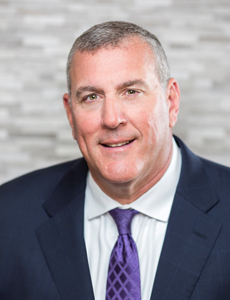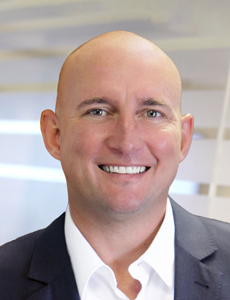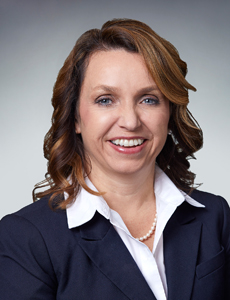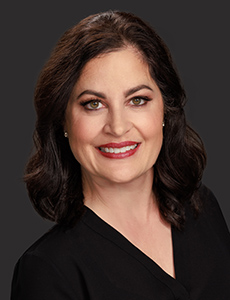4 Trends Driving Down Drug Costs in Workers’ Comp — And 3 That May Send Them Up Again

Overall drug cost and utilization were both down for workers’ comp payers in 2018. Combined with tighter regulatory control, this trend helped to reduce drug spend by nearly 4% over 2017.
That’s the key takeaway from myMatrixx’s 2018 Workers’ Compensation Drug Trend Report, which highlighted the industry’s progress toward decreasing reliance on opioids and better managing prescription authorization.

Mike Cirillo, President, myMatrixx
But though the overall outlook is positive for payers, some troubling trends are taking shape.
“Clients are already asking, ‘What’s next? What’s the next dangerous drug to watch?’” said Mike Cirillo, President of myMatrixx. And the report does point to a few potential culprits.
In addition to four positive trends coalescing to drive down drug spend in workers’ comp, this year’s report also outlines three not-so-positive developments worth tracking.
The Good News:
1. Cheaper generics are in favor over brand name drugs.
Brand-name versions of the most common drugs prescribed to injured workers are 65% more expensive today than they were in 2014. Generics, on the other hand, have dropped 35% in price over the same time period. Across all myMatrixx payers, 86% of prescriptions filled were generic versions.
Together, lower prices and higher utilization of generics have driven an overall 0.9% reduction in unit costs.
Between 2019 and 2022, a number of brand name drugs will also lose patent protection, opening the door for manufacturers to bring more generic versions to market. Nine of these are indicted for pain and inflammation, and thus represent potential new alternatives to opioids as payers shift away from addictive painkillers.
2. Opioid use is declining.
Average opioid spending among myMatrixx payers has dropped by 15%, thanks to broad efforts at prescriber education and more aggressive prescription management.
In 2017, 21% of injured workers used an opioid for at least 30 days. In 2018, that rate dropped to 17.6%.

Cliff Belliveau, VP of Business Intelligence, myMatrixx
“Two-thirds of our client base had a decline in opioid spend in 2018, and it’s safe to say opioids are no longer the top category,” said Cliff Belliveau, VP of Business Intelligence at myMatrixx.
Utilization among both NSAIDS and gabapentin — another non-opioid alternative — increased slightly, suggesting that prescribers are beginning to favor these non-addictive pain management drugs over opioids.
“NSAIDS are the top alternative to opioids. They are safer because they are not addictive, but they are not without their own risks,” said Phil Walls, Chief Clinical Officer at myMatrixx. “They can irritate the stomach lining, and are more dangerous for older patients who are predisposed to cardiac events as well. It’s important to understand these factors in order to ensure the alternative chosen is actually a more beneficial therapy.”
PBM clinical pharmacy solutions and state formularies are helping to drive this change by more closely monitoring prescription authorization and exerting greater control over the prescriptions dispensed to workers’ comp patients.
3. State regulations tighten around workers’ comp prescription monitoring.
All 50 states now have a prescription drug monitoring program. Many adopted treatment guidelines and drug formularies in 2018 or are moving to adopt them in 2019, including California, Arkansas, Indiana, Montana and Kentucky.
Read more about drugs that should raise red flags on any workers’ comp claim.
More restrictive regulatory language is also being introduced in more states. Specific protocols around opioid dispensing, for example, and prior authorization limitations for compounds and physician dispensing are helping PBMs to spot red flags before patients fill unnecessary prescriptions.
California, Kentucky, Arizona, Colorado, Florida, Hawaii, Michigan, Minnesota, North Carolina, Oklahoma, Pennsylvania, South Carolina, Texas and West Virginia are among the states to adopt opioid rules, regulations or guidelines in 2018.
4. Compound medications are nearly extinct.
Compound creams had long been a thorn in the side of pharmacy benefit managers. Because they are custom-made by pharmacists, there’s no reliable way for PBMs to track dosages. Furthermore, mixing compounds entails using ingredients in ways the FDA never approved them for.
Thankfully, the use of compounds has been significantly curtailed to the point where they are nearly extinct in the world of workers’ comp.
Thankfully, the use of compounds has been significantly curtailed to the point where they are nearly extinct in the world of workers’ comp. Utilization has decreased 24% since 2017, driving a 43% reduction in spending. In 2018, only 0.2% of medications were compound creams.
“We’ve pretty much eliminated compound creams from the picture,” said Rochelle Henderson, PhD & VP of Clinical Research at Express Scripts. “That being said, dermatologicals are growing as a category, and they will be an area to watch going forward.”
The Bad News:
1. Specialty medications drive a disproportionate percentage of costs.
Specialty medications are those usually reserved for relatively rare conditions that don’t typically impact workers’ compensation — things like multiple sclerosis, rheumatoid arthritis, hepatitis and HIV. However, myMatrixx identified several patient populations for whom these therapies could be compensable.

Phil Walls, Chief Clinical Officer, myMatrixx
These include injured workers who are exposed to HIV or hepatitis C through occupational needlestick injuries or exposure to infected bodily fluids; who experience pain and are later diagnosed with rheumatoid arthritis; or who develop cancer in states with cancer presumption laws.
While they represent a relatively low percentage of total prescriptions, specialty drug therapies come at a disproportionately high price. Though they constitute only 1.7% of prescriptions, they drive 7.1% of costs.
“Specialty medications can cost four times as much as traditional medications for payers, and they’re only becoming more expensive,” Walls said. “A single course of treatment for hepatitis C, for example, can exceed $100,000.”
2. An aging workforce is more expensive to treat.
“The prevailing wisdom is that older workers are safer and have fewer accidents, but when they do get hurt, their claims are more expensive,” Belliveau said.
The total drug spend for patients between the ages of 55 and 64 in 2018 was $1,682. At 65 and older, that figure doubles to $2,560, nearly nine times greater than the average spend for patients under age 24. As more people delay retirement and stay on the job longer, the average age of workers’ comp patients is likely to rise.
“In 1996, just 12% of the workforce was older than 55,” Belliveau said. According to the U.S Bureau of Labor Statistics, 25% of the workforce will be older than 55 by 2024.
3. Dangerous opioid combinations persist.
Though opioid utilization is falling, injured workers are still too often prescribed muscle relaxants, benzodiazepines, gabapentins, pregabalins, or some combination of the above along with their opioid.

Rochelle Henderson, PhD & VP of Clinical Research, Express Scripts
Both the Official Disability Guidelines (ODG) and American College of Occupational and Environmental Medicine (ACEOM) guidelines advise against these combos, but more than a third of claimants prescribed an opioid are still taking at least one of these contraindicated drugs.
“A particularly dangerous combination we’re seeing is an opioid with a benzodiazepine and Soma [the brand name version of carisoprodol]. There is no clinical basis for this trio and any prescribers prescribing this combination may be a bad actor,” Henderson said.
To stay ahead of these trends, myMatrixx has shifted to a broader “pharmacovigilance” approach that will continue to aggressively monitor opioid use, but also set its sights on emerging risks.
“This new program monitors and combats excessively priced drugs, identifies potential fraud and abuse, and has been a key factor in our 2018 results as we focus on avoiding the next possible crisis,” Walls said. &










